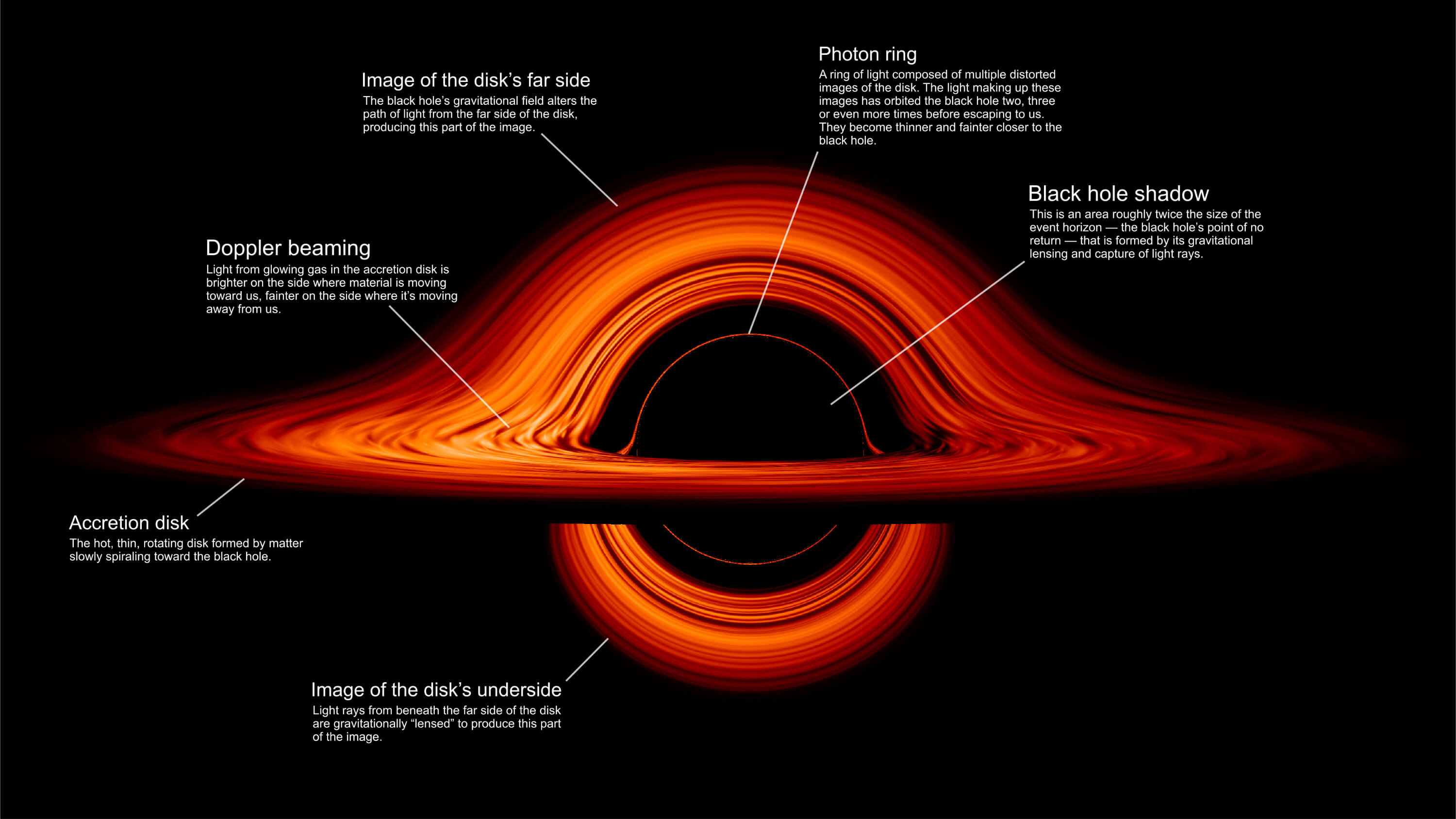Through the looking glass: NASA's latest high-res visualization of a black hole simulates how infalling matter collects into a thin, hot structure called an accretion disk. The resulting 'carnival mirror' light effect demonstrates the extreme gravity of the black hole that skews light emitted by different regions of the disk.
Given the hostile nature of black holes, it is impossible to study these regions up close. The second best option is to come up with a visualization based on detailed data and distant observations in space. NASA's Goddard Space Flight Center in Greenbelt, Maryland, came up with such an illustration to give a high-res view of a black hole's warped world.
"Bright knots constantly form and dissipate in the disk as magnetic fields wind and twist through the churning gas. Nearest the black hole, the gas orbits at close to the speed of light, while the outer portions spin a bit more slowly. This difference stretches and shears the bright knots, producing light and dark lanes in the disk." said the space agency.
The extreme gravitational field of the black hole distorts the light emitted from different parts of the disk, and depending on the viewing angle, the greatest distortion can be observed by seeing it edgewise.
From the side view (shown above), the disk appears to be brighter on the left side as compared to the right. According to NASA, this happens due to the effects of Einstein's relativity that give a 'boost' to the glowing gas on the left, while the opposite is happening on the right where the gas moves away from this angle. If viewed face on, this asymmetry would disappear as none of the material will be moving along the line of sight.
Near to the black hole's center, a "photon ring" appears as a result of excessive gravitational light-bending. The ring contains multiple circles of fainting light that has orbited the black hole several times and escaped before reaching our eyes. Inside this ring is the black hole's shadow that's roughly twice the size of the event horizon, its region of space from which nothing can escape.
"Until very recently, these visualizations were limited to our imagination and computer programs. I never thought that it would be possible to see a real black hole." said Jeremy Schnittman, who generated these visuals using custom software.
Of course, it's good to remember that we did get to see the first-ever image of a real black hole back in April this year.
